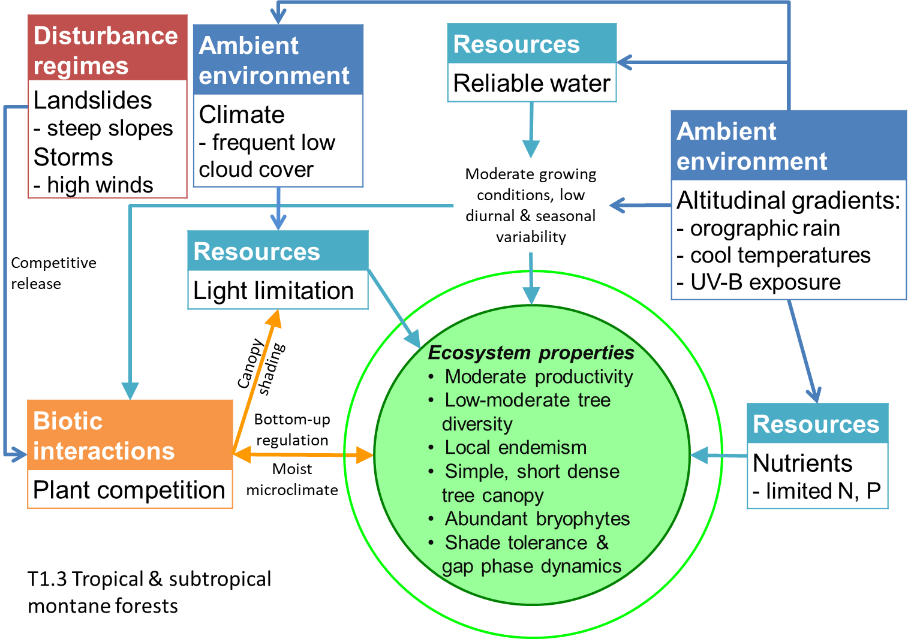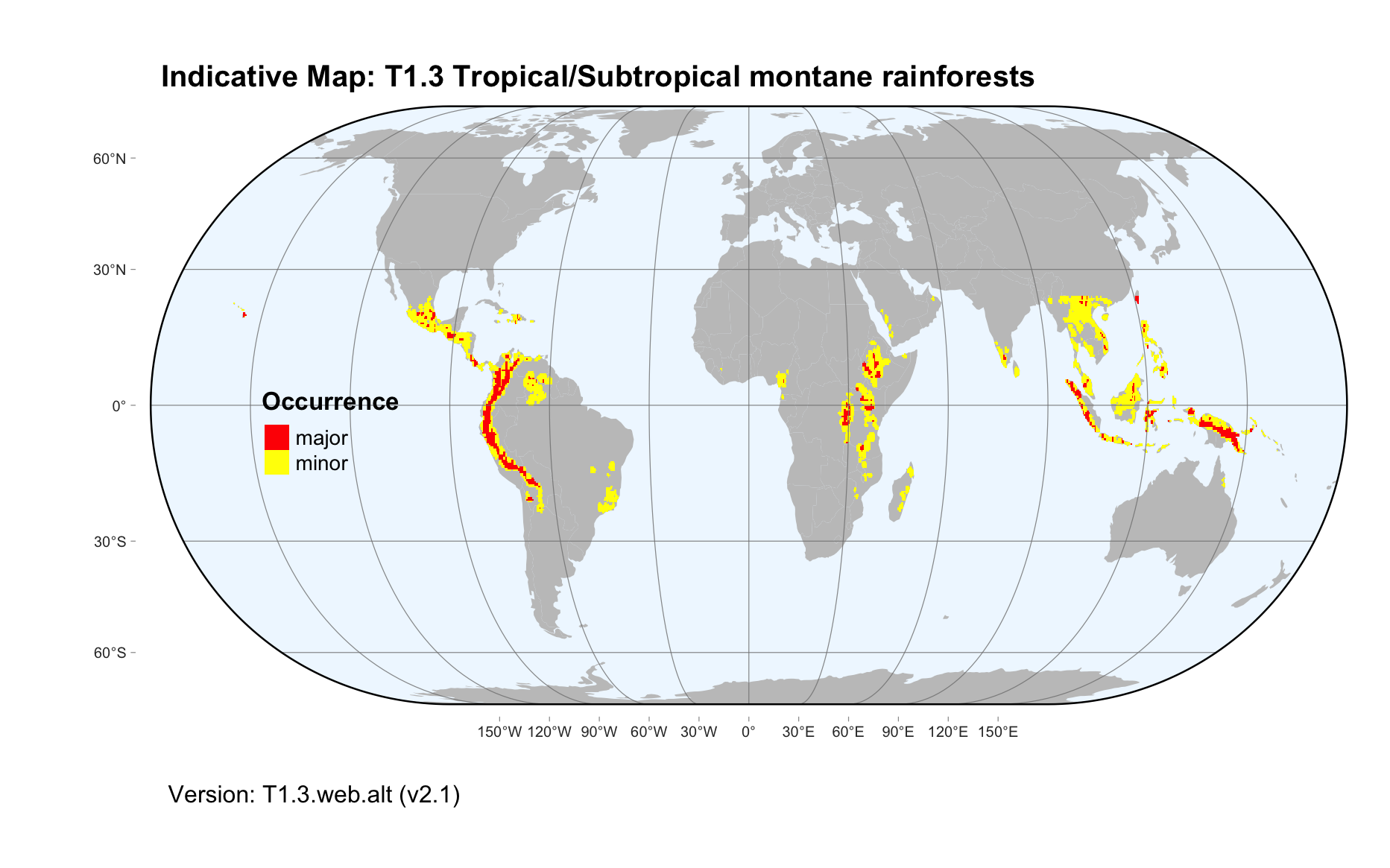Global ecosystem typology
Alternative site for the Global ecosystem typology with additional information for ecosystem profiles and indicative maps.
This site is maintained by jrfep
T1.3 Tropical/Subtropical montane rainforests
Biome: T1. Tropical-subtropical forests biome
Contributors:
(texts)
These mountain rainforests are characterised by a single-layered tree canopy, with epiphytic ferns, bryophytes, lichens, orchids, and bromeliads draping tree branches. Grasses are rare or absent. At high altitude forest structure becomes less complex, with dwarf tree forms. Although rainfall is abundant (up to 6000 mm per year), productivity is limited by cool temperatures, wind exposure and shallow soils, although under the canopy a moist shady microclimate provides stable habitat for a frog, bird, plant and invertebrate species that are found nowhere else.
Key Features
Closed-canopy evergreen forests with abundant non-vascular epiphytes in warm/cool wet cloudy climates, diverse life forms.
Overview of distribution
Global tropical & subtropical mountains.
Profile versions
- v1.0 (2020-01-20): DA Keith; NA Brummitt; A Etter
- v2.0 (2020-06-15): DA Keith; NA Brummitt; KR Young; RT Corlett; A Etter
- v2.01 ():
- v2.1 (2022-04-06): DA Keith; NA Brummitt; KR Young; RT Corlett; A Etter Full profile available at official site
Main references
Selected references for this functional group:
Gradstein SR, Homeier J, Gansert D (2008) The tropical mountain forest – patterns and processes in a biodiversity hotspot The tropical mountain forest – patterns and processes in a biodiversity hotspot Biodiversity and Ecology Series 2. Göttingen, Centre for Biodiversity and Ecology DOI:10.17875/gup2008-702
Hamilton LS, Juvik JO, Scatena FN (1995) Tropical Montane Cloud Forests Ecological Studies 110. Springer-Verlag, Berlin
Ashton PS, Seidler R (2014) On the forests of tropical Asia: lest the memory fade Kew Publishing: Kew
Diagrammatic assembly model

Maps
Maps are indicative of global distribution patterns are not intended to represent fine-scale patterns. The maps show areas of the world containing major (coloured red) or minor occurrences (coloured yellow) of each ecosystem functional group. See general notes on maps.
There are 2 alternative versions of the indicative map for this functional group, please compare description and sources below.
T1.3.WM.nwx_v1.1
Datasets
- TCF-2021
Map references
Karger, D.N., Kessler, M., Lehnert, M. et al. (2021) Limited protection and ongoing loss of tropical cloud forest biodiversity and ecosystems worldwide Nat Ecol Evol DOI:10.1038/s41559-021-01450-y
T1.3.web.alt_v2.1

Datasets
- EarthEnv-Cloud-v1.0
Map references
Wilson AM, Jetz W (2016) Remotely Sensed High-Resolution Global Cloud Dynamics for Predicting Ecosystem and Biodiversity Distributions. PLoS Biol 14(3): e1002415. doi:10.1371/journal.pbio.1002415. Dataset available on-line
Check: the Glossary / Profile structure / the public document